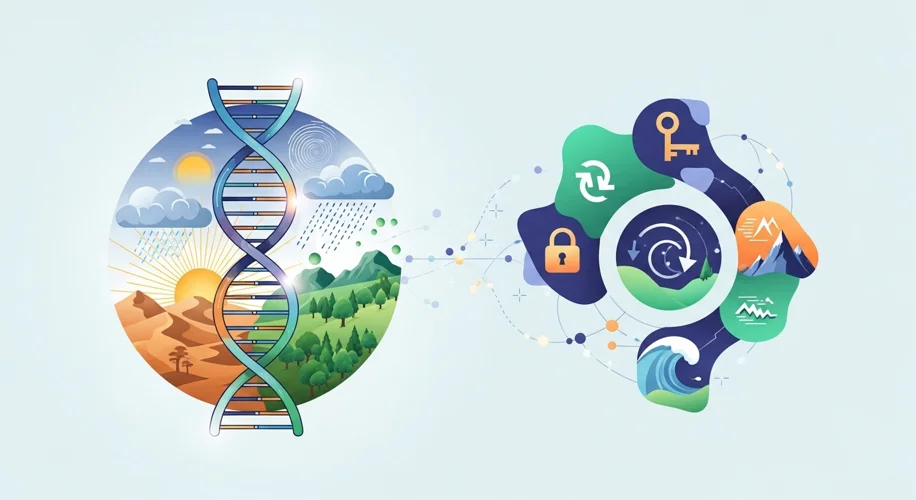As a climate scientist, I spend a lot of time thinking about how systems change and adapt. It’s often in response to pressures, like shifts in climate or the arrival of new challenges. Recently, I’ve been struck by a fascinating parallel between biological evolution and a concept we’re all very familiar with: two-factor authentication, or 2FA.
Think about it. When you log into a secure account, you often need two things to prove it’s really you. Maybe it’s your password (something you know) and a code sent to your phone (something you have). This dual verification makes it much harder for unauthorized access.
Nature, in its own way, has been running a kind of complex, multi-layered “authentication system” for life on Earth for billions of years. Instead of passwords and phone codes, evolution uses a combination of genetic variation and environmental pressures as its “factors.”
Factor 1: Genetic Diversity
Within any population, there’s a range of genetic differences. This is like having a vast library of potential keys. Some individuals might have traits that make them slightly more resistant to a disease, better at finding food in dry conditions, or more efficient at utilizing a particular resource. This genetic diversity is the raw material for adaptation. Without it, a population is vulnerable – like having only one weak password for everything.
Factor 2: Environmental Challenges
Then come the “challenges” – the environmental pressures. These can be anything from a changing climate (warmer temperatures, altered rainfall patterns), new predators, or a scarcity of food. These pressures act like the system trying to log in. They test the existing genetic makeup of the population.
When an environmental challenge arises, it “prompts” for the second factor. Only individuals whose genetic makeup (their “key”) happens to match what’s needed to survive and reproduce under the new conditions are likely to pass this test. They are the ones who can “authenticate” their fitness in the new environment.
The Result: Resilience and Adaptation
This interplay between genetic diversity and environmental challenge is what drives evolution. It’s how species have adapted to everything from ice ages to volcanic activity over millennia. A population with high genetic diversity is more likely to have individuals who can withstand a new environmental pressure, ensuring the continuation of the species, or at least a significant portion of it. It’s a robust system because it relies on multiple, interacting components.
From my perspective as a climate scientist, this concept is particularly relevant. We are currently facing unprecedented environmental changes driven by human activity. Understanding evolution’s “2FA” helps us appreciate why biodiversity is so critical. A biodiverse planet is like a system with countless different, strong passwords and verification methods.
When we reduce biodiversity, we’re essentially weakening the planet’s overall resilience. We’re removing potential “keys” that might be vital for future adaptation. As the climate continues to shift, the genetic diversity within species, and the variety of ecosystems themselves, will be crucial in determining which life forms can successfully navigate these new conditions.
So, the next time you use 2FA, perhaps you’ll appreciate the sophisticated, natural systems that have been evolving their own powerful forms of verification for eons. It’s a reminder of nature’s ingenuity and the importance of preserving the complex genetic library that makes life on Earth so resilient.
What can we do? Support conservation efforts, advocate for policies that protect natural habitats, and make choices that reduce our own environmental footprint. Every bit helps maintain the planet’s incredible adaptive capacity.

